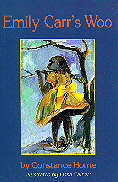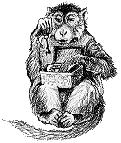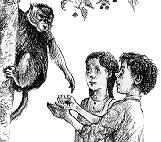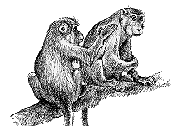
Constance Horne. Illustrated by Lissa Calvert.
Lantzville, BC: Oolichan books, 1995. 72pp, paper, $9.95.
ISBN 0-88982-149-6.
Subject Headings:
Woo (Monkey)-Juvenile fiction.
Carr, Emily, 1871-1945-Juvenile fiction.
Grades 4 - 6 / Ages 9 - 11.
Review by A. Edwardsson.


 This tale of a mischievous pet monkey is aimed at a much older crowd than
Rey's Curious George books. Author Constance Horne
(Nikola and Granny) used information gleaned from artist
Emily Carr's books, letters, and diaries to create these fictionalized
stories. It is billed as the adventures of an intelligent monkey that
"will entertain children while informing them about the life of one of
Canada's most important artists."
This tale of a mischievous pet monkey is aimed at a much older crowd than
Rey's Curious George books. Author Constance Horne
(Nikola and Granny) used information gleaned from artist
Emily Carr's books, letters, and diaries to create these fictionalized
stories. It is billed as the adventures of an intelligent monkey that
"will entertain children while informing them about the life of one of
Canada's most important artists."
